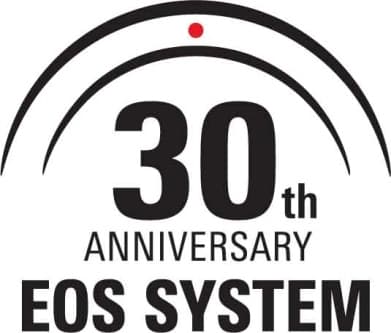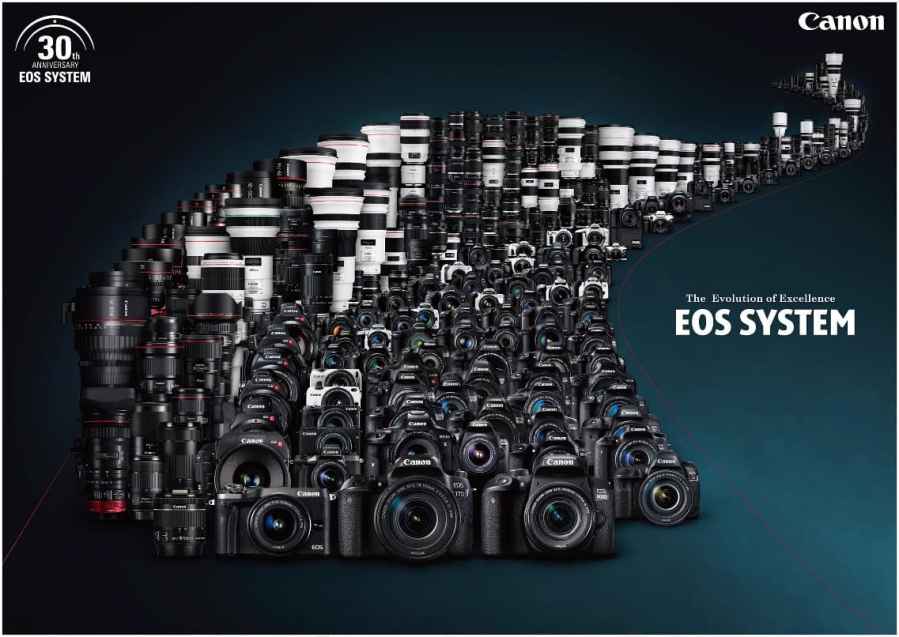The EOS system first came to life on 1st March 1987, after Canon decided to move away from its FD system cameras, and launch a fresh line of well-specified AF-capable SLRs – as well as featuring the first ever fully electronic lens-mount system – starting with the EOS 650, and EF35-70mm f/3.5-4.5, EF35-105mm f/3.5-4.5 and EF50mm f/1.8 lenses.
Thirty years on, the EOS system remains one of the world’s most popular and recognisable camera line-ups; according to their official figures, Canon have produced over 80 million EOS system cameras since the series’ launch, and a further 120 million EF lenses. Over the years, the range has grown to 98 cameras, with 63 digital and 35 film format offerings.

The Canon EOS 650 – the first DSLR to be €1000
Indeed, EOS has left a considerable mark on the photographic world, credited with a number of steps forward. The 300D, for example, ushered in a “new era” for digital photography industry in 2003 by providing the first DSLR for under €1,000 – within the reach of a much larger consumer market.
Then, five years later 2008, Canon revealed the EOS 5D Mark II was released – marking the first time full HD video recording would be available on a DSLR, and revolutionising film-making, particularly for the amateur/enthusiast market. Only two years ago, the Canon EOS 5D Mark II was voted as the most significant camera ever by AP readers, and the 5D line continues to be developed today.
In 2012, Canon turned their attention to the up-and-coming mirrorless market, launching their first mirrorless EOS, the EOS M, and a series of dedicated EF-M lenses.
Canon have also moved into more traditional video cameras with the EOS system – starting with 2012’s C300 – while maintaining compatibility for its cameras with its impressive roster of 97 EF-mount lenses.
To mark this milestone, Canon is planning to display a range of cameras and lenses from the EOS archive on its stand at this year’s Photography SHow (Stand D141/E131, 18th-21st March, NEC Birmingham) – including that original EOS 650 and the EF 1200mm f/5.6L USM, the world’s longest focal length and largest aperture lens.








